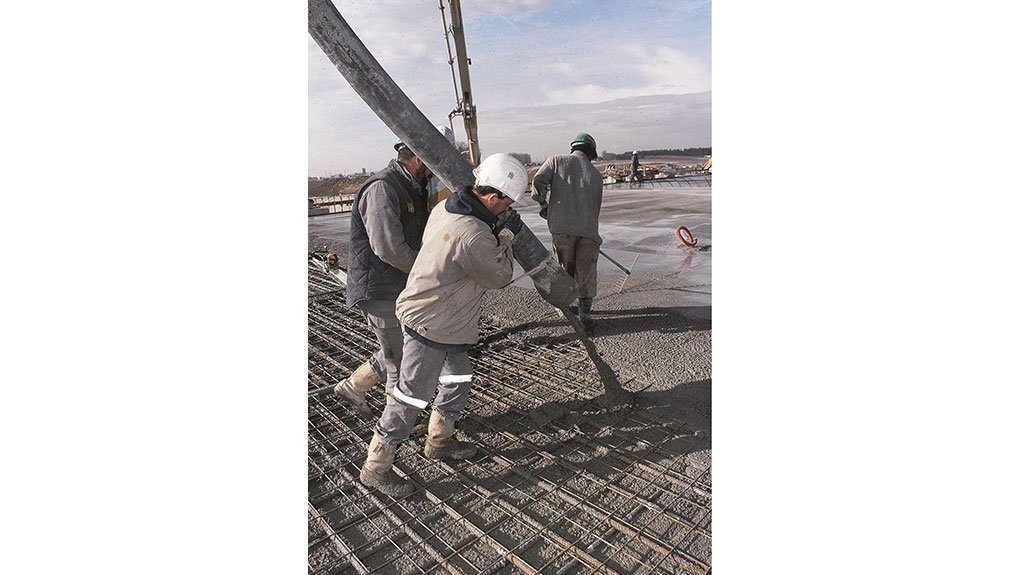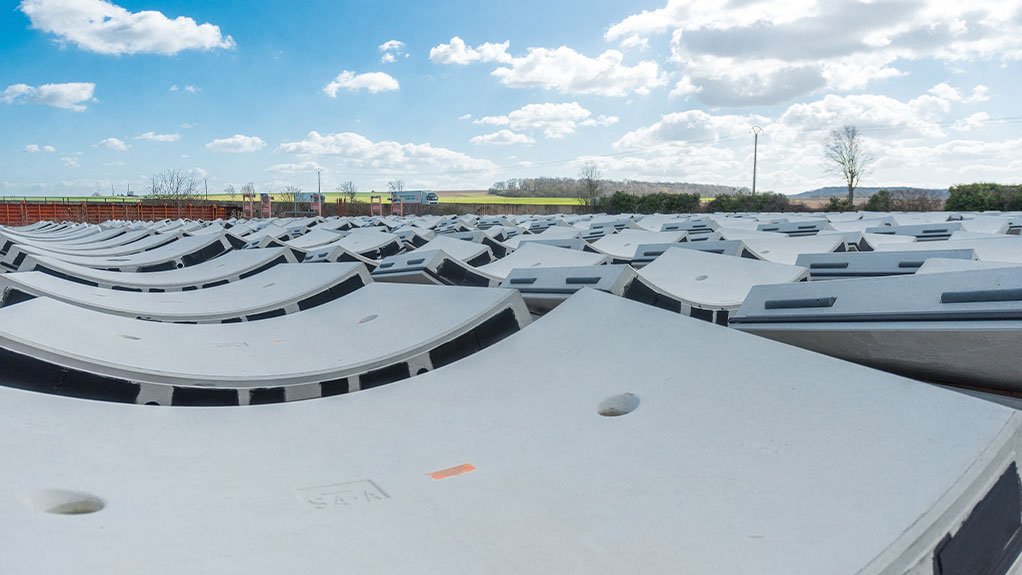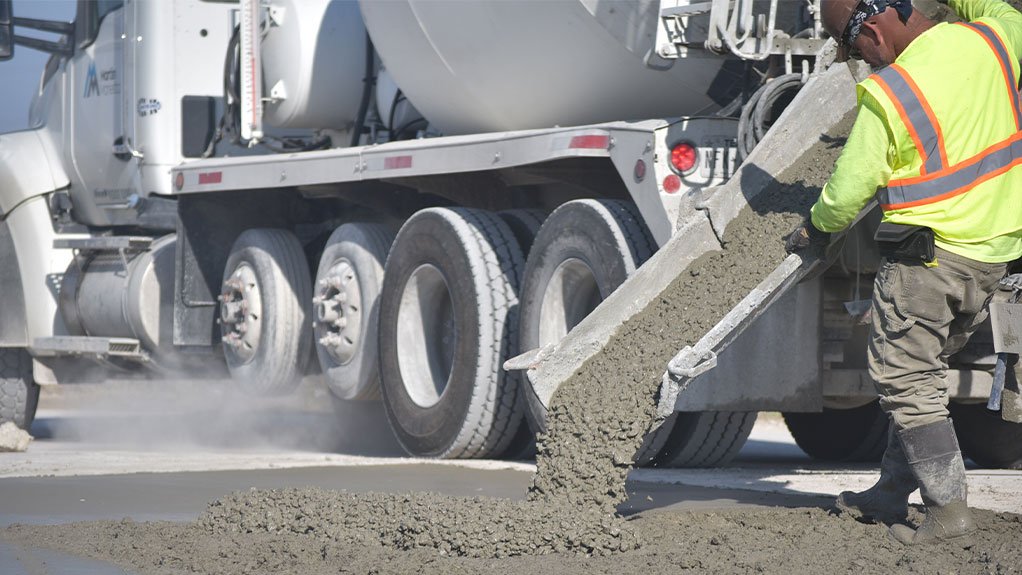Speeding up concrete curing in cold weather







Hannes Engelbrecht, Concrete Business Unit Director for Domestic and Sub Saharan Africa (SSA) at CHRYSO Southern Africa.
Patrick Flannigan, Technical Manager of the Concrete Business Unit at CHRYSO Southern Africa.
Choosing a non-chloride accelerator is essential when steel reinforcement is present in the concrete.
In freezing temperatures, the mixture resists water expansion to prevent concrete cracking.
Super plasticisers and accelerators speed up stripping times and save storage space for precast products.
A 30 to 40 minute workability is achieved by applying the accelerator upon readymix arrival.
This article has been supplied.
With South Africa’s winter season on its way, many concrete users will know that slower curing times could derail their contract or production schedules, but accelerating admixtures – or accelerators – are available to solve this challenge.
With the country’s generally temperate climate, it is easy to forget that many provinces and neighbouring Lesotho regularly experience sub-zero temperatures, points out Hannes Engelbrecht, Concrete Business Unit Director for Domestic and Sub Saharan Africa (SSA) at CHRYSO Southern Africa. Temperatures do not even need to reach freezing point; the concrete hydration process slows down steadily as temperature drops and actually stops when it goes below about 5 degrees Celsius.
A significant amount of current concrete construction – especially for wind turbine bases and foundations for solar photovoltaic infrastructure – is, in fact, taking place in provinces like the Northern Cape and Eastern Cape where temperatures fluctuate widely. Efficient stripping time of formwork is crucial in allowing these projects to meet their stringent deadlines to complete construction and start delivering renewable energy.
“Low temperatures create a range of problems for contractors and concrete product manufacturers,” says Engelbrecht. “Most projects in today’s world need to be delivered on a fast track basis, so there is no room for slow concrete curing to hold up the schedule. Similar constraints apply in the manufacture of precast products, where production must simply keep up with customer orders and delivery deadlines.”
He highlights that precast product manufacturers can use a combination of super plasticisers and accelerators to speed up their stripping times and reduce the storage space needed for products to cure. Accelerators work during the first 18 hours of the concrete’s curing time to ensure efficient hydration required to depalletize. Should temperatures be lower than freezing point, this makes the concrete strong enough to resist the expansion of water as it freezes – so that the concrete will not crack.
Patrick Flannigan, Technical Manager of the Concrete Business Unit at CHRYSO Southern Africa, explains that there are two categories of accelerator – chloride and non-chloride. While chloride-based accelerators are usually the first choice, they cannot be used if there is steel in the structure or where steel reinforcing is present due to the risk of rust, corrosion and degradation.
“If there is steel reinforcing in the concrete, then a non-chloride accelerator must be selected,” says Flannigan.
Regarding the use of accelerators in readymix concrete that must travel varying distances to site, he points out the accelerator is best applied once the readymix has arrived on the customer’s site. After it is added to the concrete in the mixing truck, it needs to be thoroughly mixed for 5 to 10 minutes before being poured. The admixture gives operators a good 30 to 40 minutes of workability before the accelerated hydration begins, depending on the type of concrete mix.
Another growing benefit of accelerators has emerged as a result of the global sustainability drive, he says, as cement producers, contractors and other customers aim to reduce their carbon footprint. This trend has seen the increased use of extenders such as fly ash and granulated slag in cement.
“The fly ash and slag only start working once there is an initial hydration of cement,” he says. “This means that the early strength of a concrete mix will be delayed when there are extenders added.”
The accelerating admixture overcomes this initial delay in the early setting, allowing users to achieve their sustainability goals without compromising on speed of the curing process.
Article Enquiry
Email Article
Save Article
Feedback
To advertise email advertising@creamermedia.co.za or click here
Comments
Press Office
Announcements
What's On
Subscribe to improve your user experience...
Option 1 (equivalent of R125 a month):
Receive a weekly copy of Creamer Media's Engineering News & Mining Weekly magazine
(print copy for those in South Africa and e-magazine for those outside of South Africa)
Receive daily email newsletters
Access to full search results
Access archive of magazine back copies
Access to Projects in Progress
Access to ONE Research Report of your choice in PDF format
Option 2 (equivalent of R375 a month):
All benefits from Option 1
PLUS
Access to Creamer Media's Research Channel Africa for ALL Research Reports, in PDF format, on various industrial and mining sectors
including Electricity; Water; Energy Transition; Hydrogen; Roads, Rail and Ports; Coal; Gold; Platinum; Battery Metals; etc.
Already a subscriber?
Forgotten your password?
Receive weekly copy of Creamer Media's Engineering News & Mining Weekly magazine (print copy for those in South Africa and e-magazine for those outside of South Africa)
➕
Recieve daily email newsletters
➕
Access to full search results
➕
Access archive of magazine back copies
➕
Access to Projects in Progress
➕
Access to ONE Research Report of your choice in PDF format
RESEARCH CHANNEL AFRICA
R4500 (equivalent of R375 a month)
SUBSCRIBEAll benefits from Option 1
➕
Access to Creamer Media's Research Channel Africa for ALL Research Reports on various industrial and mining sectors, in PDF format, including on:
Electricity
➕
Water
➕
Energy Transition
➕
Hydrogen
➕
Roads, Rail and Ports
➕
Coal
➕
Gold
➕
Platinum
➕
Battery Metals
➕
etc.
Receive all benefits from Option 1 or Option 2 delivered to numerous people at your company
➕
Multiple User names and Passwords for simultaneous log-ins
➕
Intranet integration access to all in your organisation
























